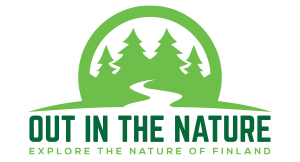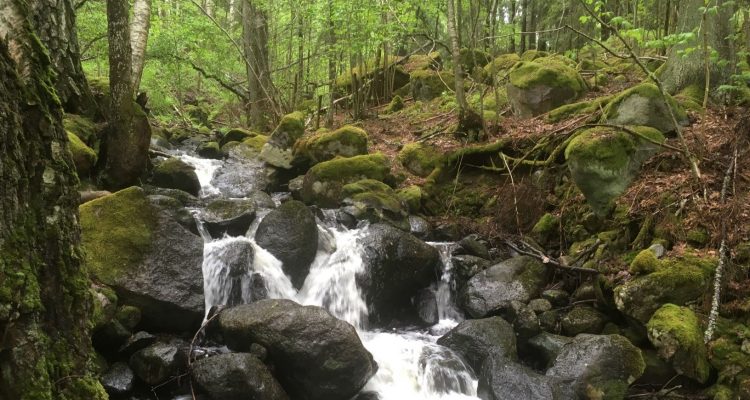Rissla forest trail is located at Fiskars village in Raseborg municipality, approximately one-hour drive west of Helsinki. Fiskars is a thriving, 600-strong community of artists and craftspeople in a beautiful setting by a river Fiskarså. The Rissla forest trail departs from the village and leads you to an old Rissla dam and beautiful waterfall in Risslaån river.
Fiskars village is historically significant as it was developed around ironworks of Fiskars Bruk, which was founded in 1646. Fiskars, also known as Fiskari in Finnish, is a popular tourist destination in summer. There are many museums, craft shops, and restaurants in the village. Fiskars also hosts many events around arts and design. This charming little artisan village is in the middle of the Finnish countryside and has cow and sheep pastures near the centre of the village.
I have been to Fiskars many times before, sometimes just passing through and stopping briefly for an ice cream, usually wondering around in the village and checking out its beautiful surroundings. This time I was in the neighbourhood and despite the rain decided to take my dog Nalle for a walk.
The Rissla waterfall and dam
The Rissla dam and powerplant were built to the Risslaån river in 1899 to produce energy for the Fiskars Bruk. The Rissla waterfall begins from the dam and drops down approximately 18 meters within a 100 meter distance. There isn’t a great amount of water in this tiny river, but it’s a beautiful area with a path right next to the stream. During a drought the waterfall might dry out completely.
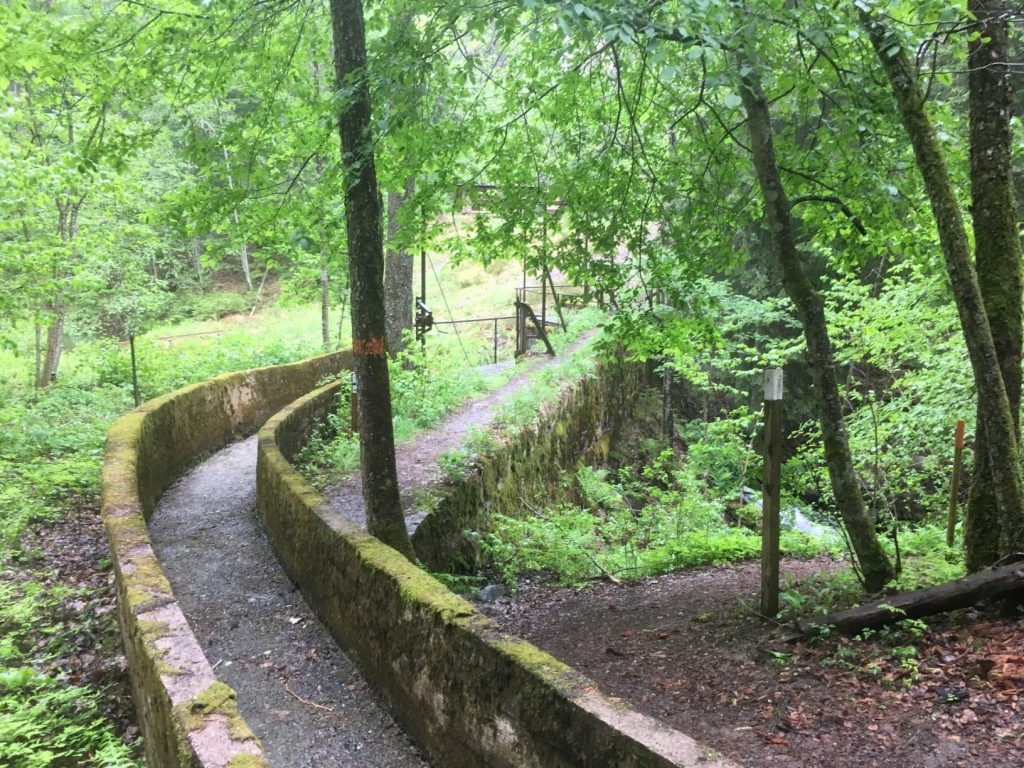
The Rissla forest trail
The Rissla forest trail is approximately 4 kilometers long, going from the village to the Rissla waterfall and back.
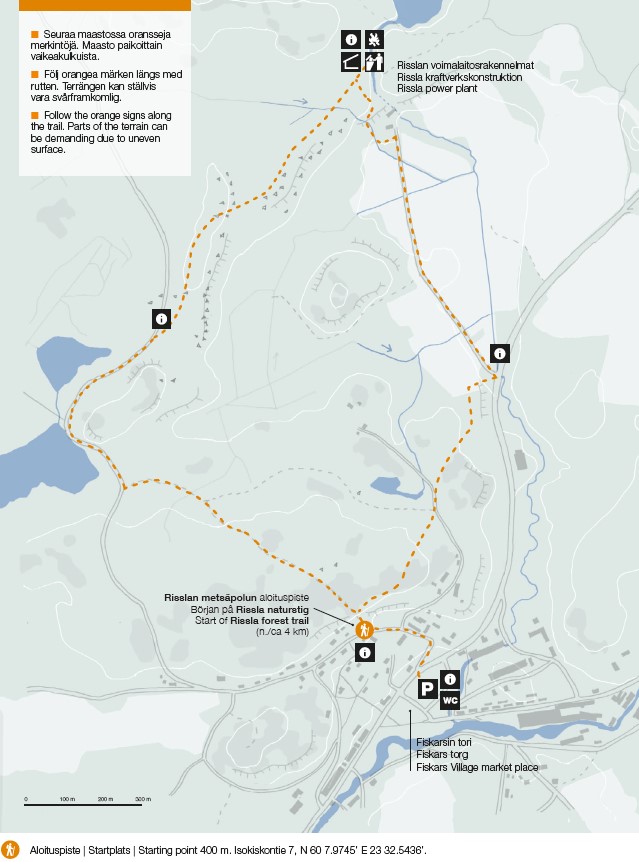
I parked my car in the centre of the village and walked up the hill to Isokiskontie 7, where the first information board and map for the trail are. The Rissla trail is well marked with orange paint and therefore very easy to follow. The trail begins with a steep climb and it’s immediately obvious, that this trail is not suitable for small children or buggies. I could hardly keep up with my dog!
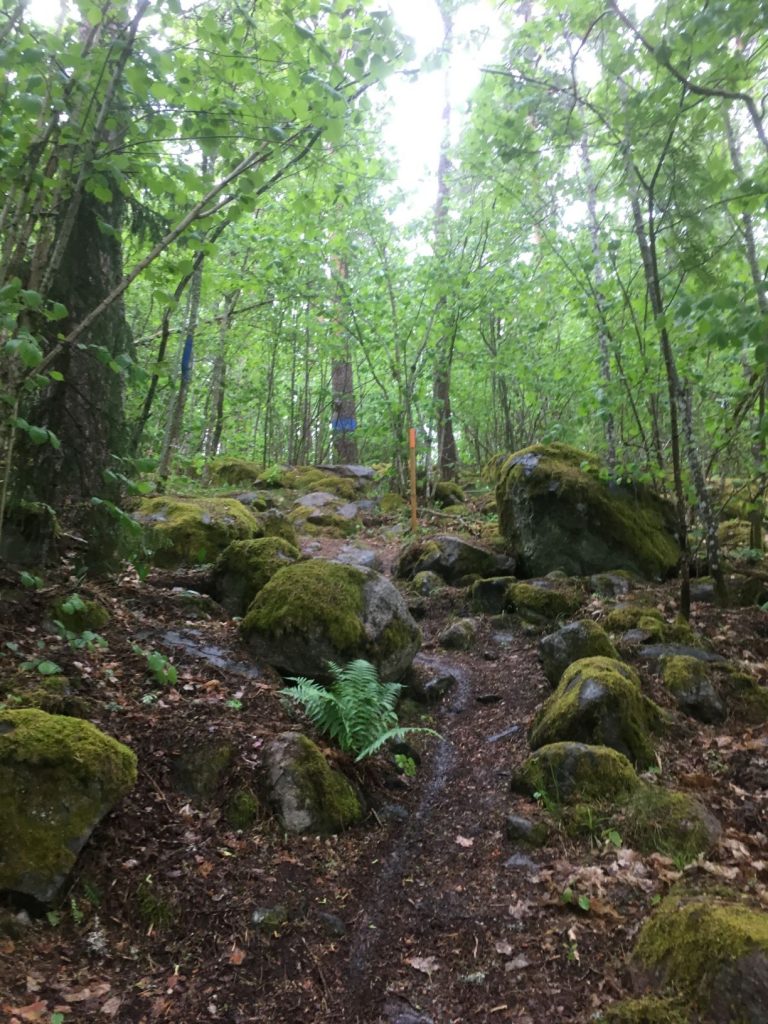
As soon as I climbed up the hill, I came to a crossroad on the trail. It is a circle trail and it doesn’t really matter which way you decide to walk it, but I turned right and started walking the trail anticlockwise. I later learned that there were some downhills and uphills on the trail anyway. Approaching the Rissla waterfall anticlockwise means that you will first come to the downstream and make your way up to the dam.
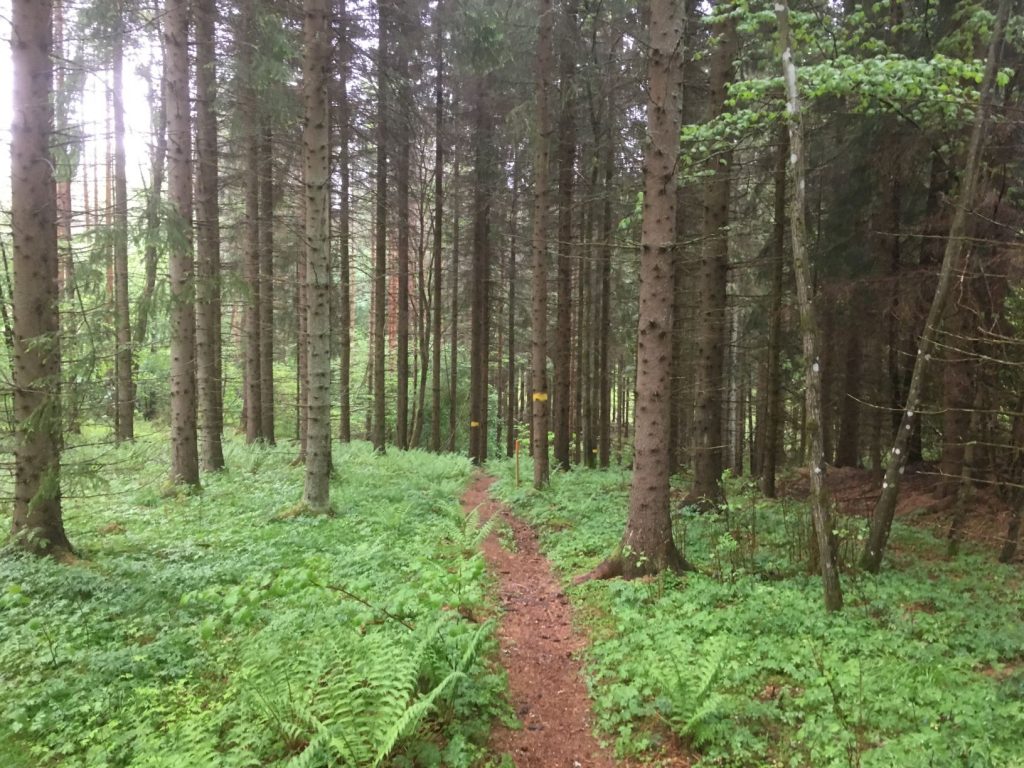
The first part of the trail took me and Nalle mainly downhill through the forest until we were walking on a dirt road in the middle of some fields. It was raining pretty heavily at this point. The rain doesn’t usually matter in the forest, but out in the field I could feel it despite of my rain coat. The road was leading to a house, and just before the house the trail turned left and off the road. We passed the house and here I could already hear the waterfall. We started walking uphill towards the dam, checking out the waterfall along the way.
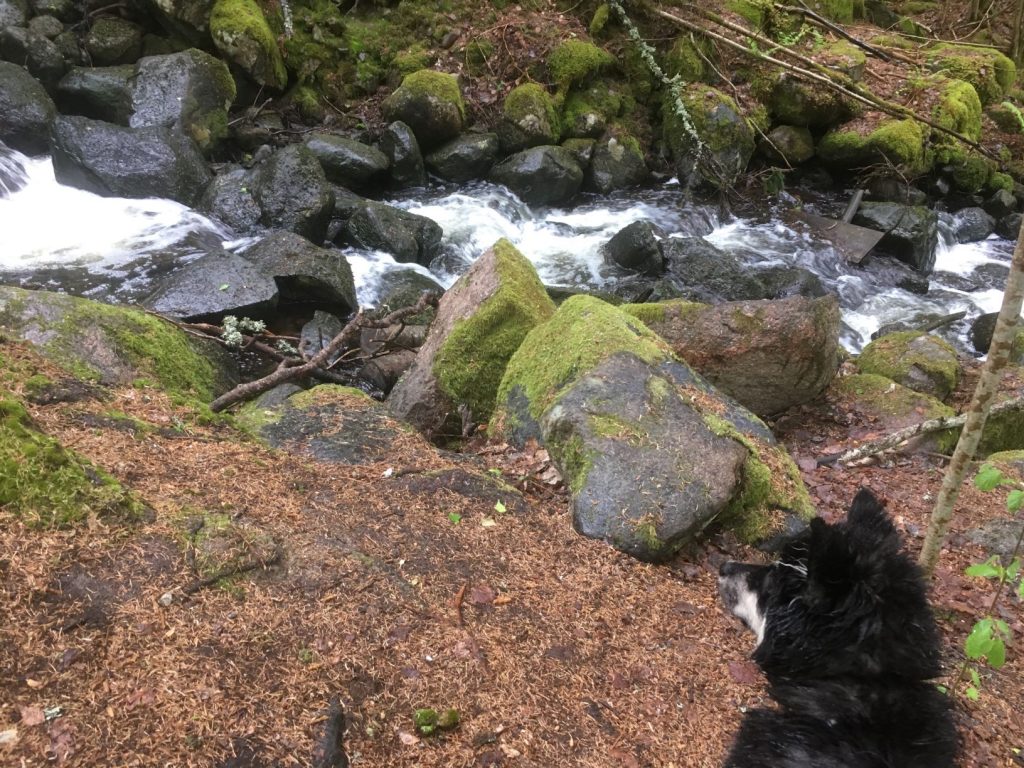
I was curious to see the old dam, and I also noticed a new lean-to shelter near the dam. Nalle was bravely crossing the dam and all little bridges along the trail.

From the dam we walked up little stairs and continued the trail where the orange marks were painted. The next part of the trail was probably my favorite as the path was going through a forest again.
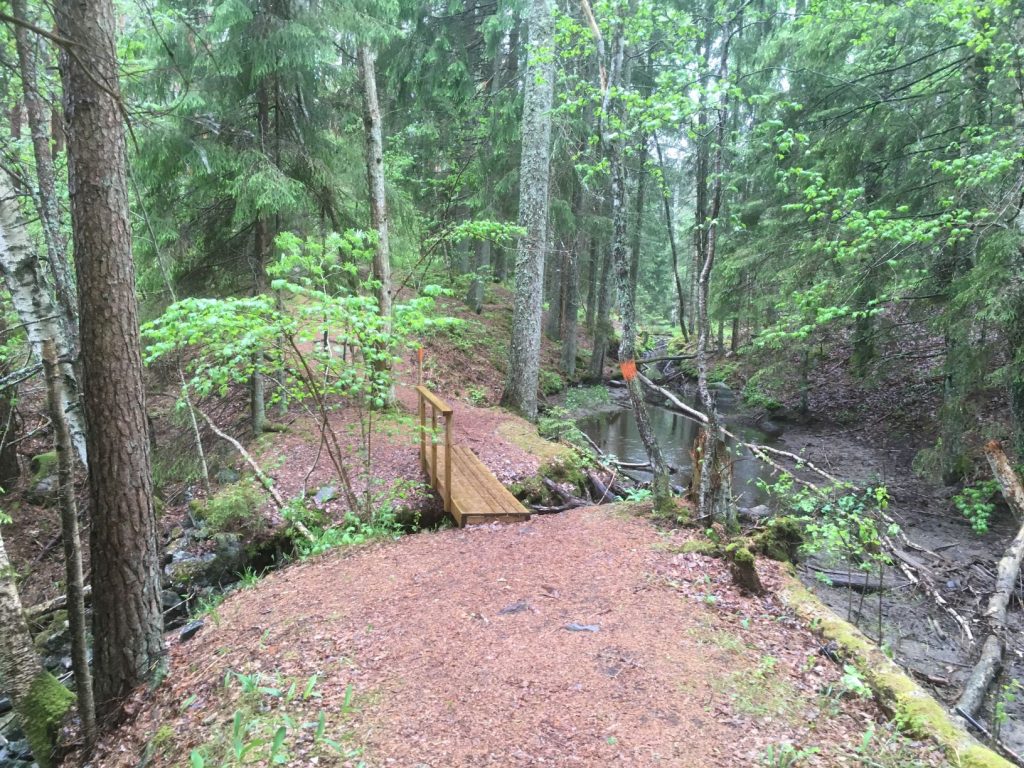
Then we reached a road and walked by few lakes, still following the orange marks by the road. This trail was so well marked that even I didn’t have to worry about getting lost. The final part took us to a forest path again until we reached the crossroad where we first climbed up the hill and turned to the right. Going down the hill in the rain was a bit slippery. We got back to our car and I don’t know who was more wet from the rain, me or Nalle.
Directions to Fiskars
Address:
Isokiskontie 7 / Storkiskovägen 7
10470 Fiskars
How to get there:
- Car: Set Peltorivi 1 (Åkerraden 1) Raseborg on your navigator. This takes you to a carpark in the centre of Fiskars village. From there, it is about a 400 m walk to the beginning of the trail at Isokiskontie 7 (Storkiskovägen 7).
- Bicycle: There are no specific pedestrian or cyclist roads to this area so you will have to cycle next to the road. Mountain biking is pretty popular in Fiskars Village Trail Center paths.
- Public transport: From Helsinki, you can get to Karjaa by bus or train in about an hour, and a taxi or local bus takes you the remaining 15 kilometers to Fiskars. There is also a direct connection daily with a travel time of approximately 1 h 45 min. Check the timetables from Matkahuolto route planner.
Accessibility: This forest trail is not accessible for wheelchairs, children’s buggies or small kids or puppies. Fiskars village however is a lovely destination for everyone in all ages.
When to go: The best time to visit the Rissla forest trail is from spring to autumn as the trail might be slippery or snowy in winter. Spring might be the best time to see the Rissla waterfall at its peak.
What to wear: Mosquito repellent in the summer. Hiking shoes are good but normal sneakers will suffice as well.
Special to know: Another shorter and easier nature trail called Tree Species Path departs behind Fiskars’ Wärdshuset. It highlights different tree species that are found in forests and parks. Along the 1,8 km long route there are 23 different species.
Other similar nature destinations in Finland
If you liked this place, check out also the following rapids in Southern Finland:
- Myllykoski rapids at Nurmijärvi – Myllykoski is easy to visit from the capital area (also by public transport) and a famous place to spot the white-throated dippers. It has duckboards and several fireplaces along its nature trails.
- Latokartanonkoski rapids are located in Kiskonjoki river in Perniö in Salo municipality. The area hosts a well market nature trail with two beautiful bridges over the stunning river. Highly recommended!
- Juvankoski is a small and historical waterfall in Salo municipality in Finland. Juvankoski represents the 19th century paper industry environment that has survived in its original form here.
- Largest free-falling waterfall in Finland is Hepoköngäs located in Puolanka in the Kainuu region.
